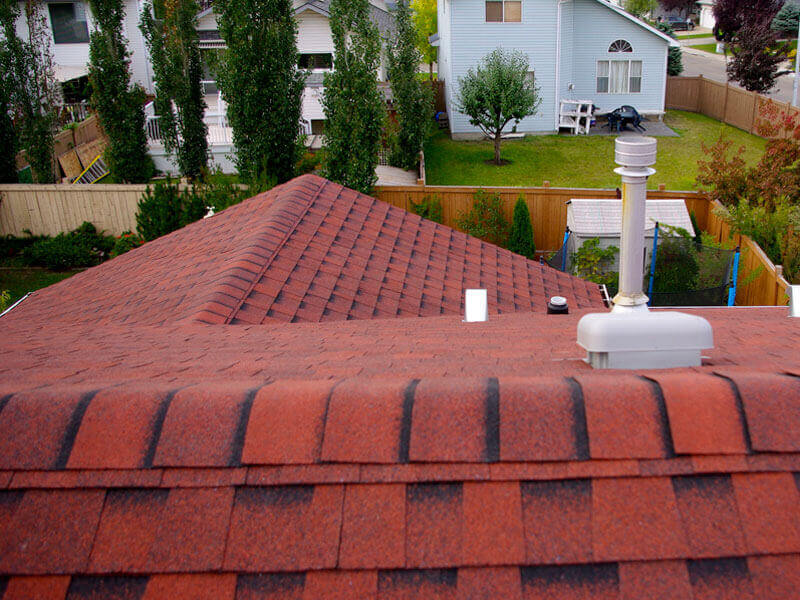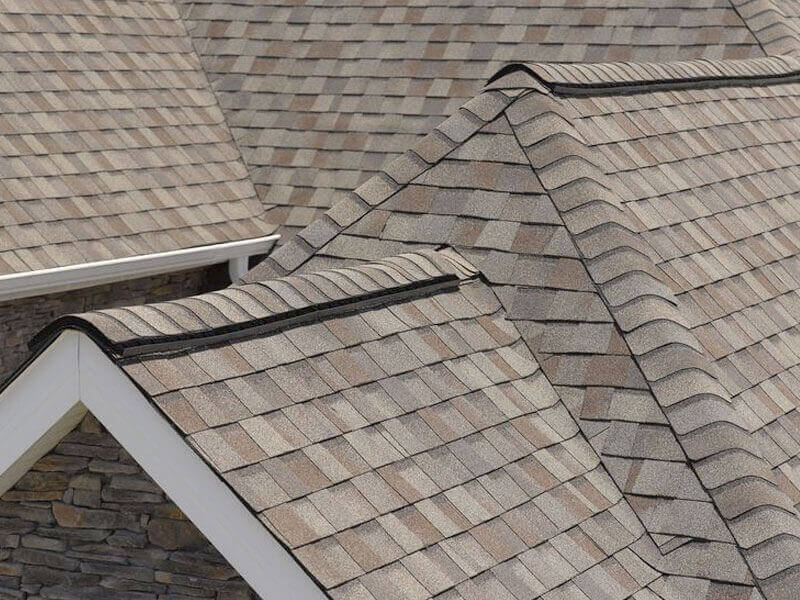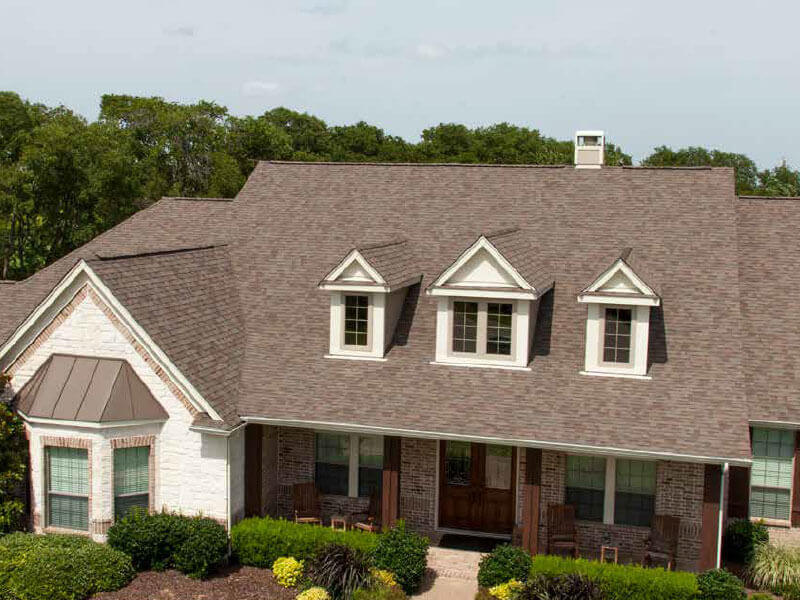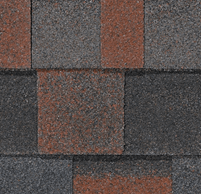October 25, 2024
Roofing shingles have been a popular choice for homeowners for decades. They provide both protection and style to roofs across the country. Originating in the late 19th century, asphalt shingles became the go-to option due to their affordability and durability. Today, they come in various colors and styles, allowing homeowners to enhance their curb appeal.
Choosing the right roofing shingles is essential for long-lasting protection against the elements. Understanding the different types, such as asphalt, wood, and metal, can help you make an informed decision. This guide will explore everything you need to know about roofing shingles, from installation tips to maintenance advice. Get ready to elevate your home's exterior and ensure it stands strong for years to come.
Key Takeaways
-
Understand the different types of roofing shingles, such as asphalt, wood, and metal, to choose the best option for your home.
-
Explore various roofing shingle options that fit your budget and aesthetic preferences, ensuring you get the best value for your investment.
-
Consider related roofing products like underlayment and ventilation systems to enhance the performance and longevity of your roof.
-
Elevate your roofing experience by hiring a qualified contractor who can provide expert advice and quality installation services.
-
Choose shingle colors that complement your home’s style and blend with the neighborhood to improve curb appeal and resale value.
-
Keep in mind the warranty options available for roofing shingles, as they can offer peace of mind and protection against future repairs.
Types of Roofing Shingles

Asphalt Shingles Overview
Asphalt shingles are a popular roofing material. They are known for their affordability and versatility. Homeowners often choose them because they fit many architectural styles. A wide range of colors and designs is available. This variety allows for customization to match personal preferences. The lifespan of asphalt shingles typically ranges from 20 to 30 years. Many manufacturers offer warranties between 25 to 50 years, providing peace of mind.
Metal Shingles Benefits
Metal shingles provide long-lasting protection. They can last between 40 to 70 years with proper maintenance. Their durability is a significant advantage. These shingles resist extreme weather conditions effectively. High winds and heavy snow do not easily damage them. Homeowners also benefit from the energy efficiency of metal shingles. They reflect solar heat, which can help reduce cooling costs in hot climates.
Wood Shingles Pros and Cons
Wood shingles add natural beauty to homes. Their aesthetic appeal enhances the overall charm of a property. However, wood shingles come with drawbacks. They are susceptible to rot, pests, and fire if untreated. Regular maintenance is essential to prolong their life. Homeowners should conduct inspections and apply protective treatments frequently. This upkeep ensures that wood shingles remain in good condition.
Slate Shingles Durability
Slate shingles rank among the most durable roofing materials available. They can last over 100 years with proper care. Their longevity makes them a wise investment for homeowners. Slate shingles resist fire, mold, and insects effectively. This resistance contributes to their safety and reliability as a roofing option. Weight considerations are crucial when installing slate shingles. Homes must meet specific structural requirements to support the added weight.
Roofing Shingle Options

Architectural vs. Three-Tab
Architectural shingles are thicker than three-tab shingles. They have a dimensional look that adds depth to roofs. In contrast, three-tab shingles lie flat. This creates a simpler appearance but lacks the visual interest of architectural options.
Durability is another key difference. Architectural shingles resist wind better than three-tab versions. They can withstand gusts up to 130 mph. This makes them a reliable choice in storm-prone areas. Homeowners appreciate the enhanced durability of architectural shingles.
Aesthetic versatility also sets architectural shingles apart. They come in various colors and styles. This allows homeowners to match their roofing with their home's design. The ability to choose from many roof shingles means more personalization.
Impact-Resistant Shingles
Impact-resistant shingles are designed for severe weather. They protect against hail damage and other harsh conditions. Homeowners often seek these materials for added security.
Insurance discounts may be available for using impact-resistant roofing materials. Many insurance companies reward homeowners who invest in stronger roofs. These discounts can lead to significant savings over time.
Certifications matter when selecting impact-resistant shingles. Look for ratings like UL 2218, which indicate quality and performance. Choosing certified products ensures that homeowners get the protection they need.
Energy-Efficient Choices
e roofing materials have reflective properties. These help reduce heat absorption from the sun. Energy-efficient roofing options can lower energy bills significantly.
Cool roofing choices are beneficial in hot climates. They keep homes cooler during summer months. This improves comfort and reduces reliance on air conditioning.
Proper insulation complements energy-efficient roofing materials. It prevents heat loss in winter and keeps homes warm. Combining insulation with efficient roofing maximizes energy savings.
Related Roofing Products
Underlayment Importance
Underlayment plays a crucial role in roofing systems. It provides an additional layer of protection against moisture. This barrier prevents water from seeping into the roof structure. Moisture can lead to mold, rot, and other serious issues.
Proper underlayment enhances the overall performance and longevity of roofing materials. It acts as a shield against wind-driven rain and ice dams. Homeowners can choose between different types of underlayment. Felt underlayment is traditional but can absorb moisture. Synthetic options offer better durability and resistance to tears.
Ventilation Systems
Ventilation systems are essential for maintaining airflow in the attic. They help regulate temperature and humidity levels. Proper ventilation prevents moisture buildup, which can damage roofing materials over time.
Good ventilation extends the life of the roof and improves energy efficiency. Ridge vents allow hot air to escape from the peak of the roof. Soffit vents draw cooler air into the attic from below. Together, these systems work to keep the attic balanced and dry.
Gutter Compatibility
Ensuring gutters are compatible with your roofing material is vital. The right gutter system directs water away from the home. This helps prevent water damage to walls and foundations.
Gutters also protect landscaping by managing runoff effectively. Regular maintenance is necessary to avoid clogs that can lead to overflow issues. Clean gutters reduce risks of water pooling around the house, which can cause structural damage.
Elevating Your Roofing Experience

Installation Best Practices
Following manufacturer guidelines is crucial during installation. These guidelines ensure that the roofing shingles perform as intended. Each brand may have specific requirements. Ignoring these can lead to problems down the line.
Hiring experienced professionals is another key factor. Skilled roofers understand the nuances of installation. They can spot potential issues early and address them effectively. Quality workmanship is essential for a long-lasting roof.
Safety measures cannot be overlooked. Workers must use proper equipment to avoid accidents. This includes harnesses, helmets, and scaffolding when necessary. A safe work environment benefits everyone involved in the project.
Maintenance Tips
Regular inspections are vital for your roof's health. Homeowners should check their roofs at least twice a year. This helps identify any potential issues before they become serious problems. Early detection can save money on repairs later.
Cleaning debris from the roof and gutters is equally important. Leaves, branches, and dirt can trap moisture and cause damage. Regular cleaning helps prevent rot and leaks. It also maintains the roof's overall appearance.
Scheduling professional maintenance at least once a year is recommended. Experts can provide a thorough inspection and address minor issues. This proactive approach can prolong the lifespan of your roof significantly.
Choosing a Reliable Contractor
Researching contractors' credentials is essential before making a decision. Look for licensed and insured professionals to ensure quality work. Reading customer reviews provides insight into their past performance.
Obtaining multiple quotes allows homeowners to compare pricing and services offered. This step helps in making an informed choice that fits within budget constraints. It also gives you an idea of what to expect from different contractors.
Clear communication is key throughout the process. Discuss project timelines and expectations upfront to avoid misunderstandings later on. Providing detailed information about your needs leads to better results.
Shingle Color Choices

Popular Color Trends
Current trends in roofing shingles show a rise in earthy tones. Colors like browns, greens, and grays are popular. These shades blend well with natural surroundings. Bold hues such as deep blue or vibrant red also attract attention. They can make a house stand out in the neighborhood.
Color choices significantly impact the overall curb appeal of a home. A well-chosen color can enhance its attractiveness. It’s essential to consider neighborhood aesthetics too. Homes that fit into their surroundings often have better resale value. Matching the local style helps maintain community character.
Matching Home Aesthetics
Selecting roofing materials requires careful thought about the home’s architectural style. Traditional homes may look best with classic colors like slate gray or dark brown. Modern designs might benefit from brighter or more unique colors.
The right roofing choice can boost property value and visual appeal. A cohesive look between the roof and the house draws positive attention. Local building codes and community guidelines often influence aesthetic decisions. These regulations ensure that new roofs match existing structures in the area.
Climate Considerations
Different roofing materials perform differently based on climate conditions. For example, asphalt shingles work well in various environments but may not be ideal for extreme heat. Metal roofs reflect sunlight, making them suitable for hot regions.
Homes in cold climates need shingles that resist ice and snow buildup. Certain materials hold up better against heavy rain or humidity as well. Selecting materials that withstand local weather patterns is crucial for longevity.
Consulting with professionals helps homeowners determine the best options for their specific climate. Experts can provide insights into which materials offer durability and efficiency based on regional conditions.
Final Remarks
Choosing the right roofing shingles can elevate your home's curb appeal and protect your investment. With various types, colors, and related products available, you have plenty of options to tailor your roof to fit your style and needs. Understanding these choices empowers you to make informed decisions that enhance both functionality and aesthetics.
Don't wait to transform your roofing experience. Explore the shingle options that resonate with you and consider how they can boost your home's value. Dive into this journey today and give your roof the upgrade it deserves. Your home will thank you!
Frequently Asked Questions
What are the main types of roofing shingles?
The main types of roofing shingles include asphalt, wood, metal, slate, and tile. Each type offers unique benefits like durability, aesthetics, and cost-effectiveness.
How do I choose the right roofing shingles for my home?
Consider factors like climate, budget, and architectural style. Asphalt shingles are popular for affordability, while metal offers longevity and energy efficiency.
What color options are available for roofing shingles?
Roofing shingles come in a wide range of colors, including black, gray, brown, and even vibrant hues. Choose a color that complements your home’s exterior and enhances curb appeal.
Are there eco-friendly roofing shingle options?
Yes, many manufacturers offer eco-friendly shingles made from recycled materials or sustainably sourced wood. Look for products with energy-efficient ratings to reduce your carbon footprint.
How long do roofing shingles typically last?
Most asphalt shingles last 15-30 years, while metal and slate can last over 50 years with proper maintenance. Always check the manufacturer's warranty for specific lifespan details.
Can I install roofing shingles myself?
While DIY installation is possible for experienced homeowners, hiring a professional is recommended to ensure proper installation and avoid costly mistakes.
What related roofing products should I consider?
Consider underlayment, flashing, and ventilation systems alongside shingles. These products enhance roof performance and longevity by preventing leaks and promoting airflow.
Not what you were looking for? Safe Roofing also offers the following services:
Roof Replacement
Roof Repair
Roof Ventilation
Solar Panel installation
Gutter Installation
Safe Roofing’s Certifications and Qualifications
Manufacturer Certification: IKO (preferred installer)
Building Products of Canada Corp.
GAF Certified Roofer
CertainTeed
Euroshield Certified





